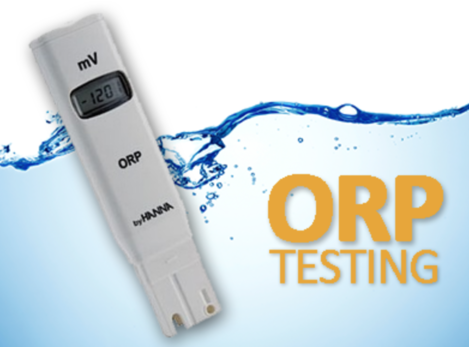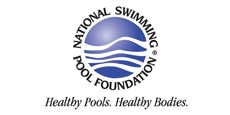Oxidation-Reduction Potential

ORP is the only practical method we have to electronically monitor sanitizer effectiveness.
ORP stands for Oxidation-Reduction Potential. In practical terms, it is a measurement to oxidize contaminants. ORP is the only practical method we have to electronically monitor sanitizer effectiveness. Every true system of automatic chemical control depends on ORP to work.
We know the routine involved in maintaining proper water chemistry. First you test the water, then you adjust it to recommended chemical levels.In the real world, we all know that chemical maintenance of pool and spa water is a fairly complicated balancing act. You must maintain sanitizer residual at a level sufficient to protect swimmers and bathers from the invasion of unwanted organisms.Of all the factors involved in chemical maintenance, the "frontline" troops are two: sanitizer residual and pH. By far, these are the chemical tests performed most often.In a public public pool or spa - one that is under constant observation by local health authorities - some form of dependable, accurate, automatic chemical control may well be a necessity.If you want true chemical control, you've got to have some method of monitoring both the sanitizer residual and the pH and using that information to chemically treat the water. That's where ORP enters the picture.
So What Exactly Is ORP?
As we stated earlier, ORP stands for Oxidation-Reduction Potential.We now know that oxidation involves an exchange of electrons between two atoms. The atom that loses an electron in the process is said to be "oxidized." The one that gains an electron is said to be "reduced." In picking up that extra electron, it loses the electrical energy that makes it "hungry" for more electrons.Chemicals like chlorine, bromine, and ozone are all oxidizers. It is their ability to oxidize - to "steal" electrons from other substances - that makes them good water sanitizers, because in altering the chemical makeup of unwanted plants and animals, they kill them. Then they "burn up" the remains, leaving a few harmless chemicals as the by-product.Of course, in the process of oxidizing, all of these oxidizers are reduced - so they lose their ability to further oxidize things. They may combine with other substances in the water, or their electrical charge may simply be "used up." To make sure that the chemical process continues to the very end, you must have a high enough concentration of oxidizer in the water to do the whole job.But how much is "enough?" That's where the term potential comes into play.Potential energy is energy that is stored and ready to be put to work. It's not actually working, but we know that the energy is there if and when we need it.
In electrical terms, potential energy is measured in volts.
When we use the term potential in describing ORP, we are actually talking about electrical potential or voltage. We are reading the very tiny voltage generated when a metal is placed in water in the presence of oxidizing and reducing agents. These voltages give us an indication of the ability of the oxidizers in the water to keep it free from contaminants.
How Do You Measure ORP?
An ORP probe is really a millivolt meter, measuring the voltage across a circuit formed by a reference electrode constructed of silver wire (in effect, the negative pole of the circuit), and a measuring electrode constructed of a platinum band (the positive pole), with the pool water in between.The reference electrode, usually made of silver, is surrounded by salt (electrolyte) solution that produces another tiny voltage. But the voltage produced by the reference electrode is constant and stable, so it forms a reference against which the voltage generated by the platinum measuring electrode and the oxidizers in the water may be compared.The difference in voltage between the two electrodes is what is actually measured by the meter. Modern ORP electrodes are almost always combination electrodes, that is both electrodes are housed in one body - so it appears that it is just one "probe."
How pH Affects ORP
We know that sanitizer effectiveness can vary rather significantly with changes in pH - particularly in regards to chlorine, which is by far the most commonly used chemical for water sanitation.You will recall from previous articles about chlorine that the killing form of chlorine is hypochlorous acid (chemical formula HOCI), which, not coincidentally, is a powerful oxidizer. You will also remember that the percentage of hypochlorous acid is present in pool and spa water depends directly on the pH.A DPD test can tell you how much of the chlorine is combined and how much is free and available, but it cannot tell you what percentage is in the form of hypochlorous acid. To determine this, you must take a pH test and calculate the results. Altering the pH will not effect the results of a DPD test.Although ORP does not specifically tell you the chlorine concentration in parts per million, it does indicate the effectiveness of the chlorine as an oxidizer. An ORP reading will vary as pH fluctuates. As the pH goes up, the millivolt reading on an ORP meter will go down, indicating that the sanitizer is not as effective. Bringing the pH down or adding more sanitizer will raise the millivolt reading.That is why most ORP instruments also incorporate an electronic pH meter - which measures the difference in electrical potential between the pool water and a sample of known pH that is contained in the probe in a small glass bulb.
Setting the Standard
In 1972, the World Health Organization adopted an ORP standard for drinking water disinfection of 650 millivolts..In Germany, which has about the strictest water quality standards in the world, an ORP level of 750 millivolts has been established as the minimum standard for public pools (1982) and spas (1984).In its 1988 standards for commercial pools and spas, the National Spa & Pool Institute stated that ORP can be used as a "supplemental measurement of proper sanitizer activity" when chlorine or bromine are used as primary disinfectants. The recommended minimum reading under the NSPI standards is 650 millivolts, with no ideal and no maximum.
Benefits of Automation
Eliminates Human Error
Savings from unnecessary disinfectant and pH reducing chemicals








